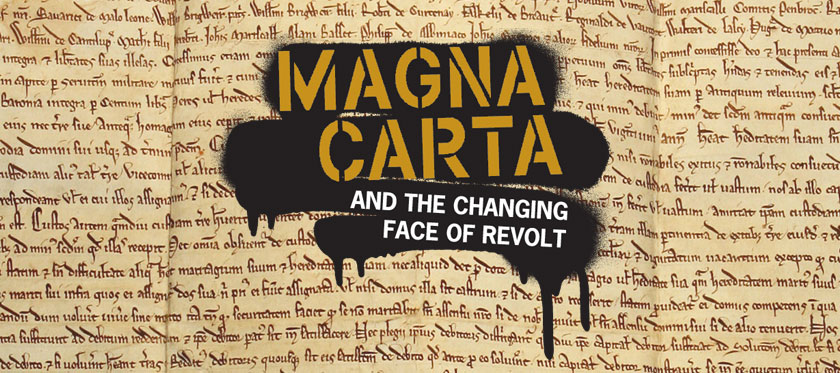Magna Carta and the Changing Face of Revolt
1 June 2015 – 31 August 2015
Palace Green Library
Marking the 800th anniversary of Magna Carta, this special exhibition featured the only surviving 1216 issue of the charter.
Magna Carta was first sealed in 1215 by King John. The concession it has come to represent – that all authority can be limited by law – was extracted from the king by a group of barons who chose political engagement over passive obedience. As such they were acting no longer as loyal subjects, but as rebellious citizens.
Magna Carta and the Changing Face of Revolt explored the charter as part of a long history of the contested identity of the citizen, stretching from the Wars of the Roses to the Great Reform Act and from the Suffragettes to the Occupy Movement. Who has the right to speak and act against authority? Are there limits on what citizens can say and do? Over time, citizenship included the ‘people’ as well as the aristocracy, and non-elites demanded and secured political participation, rights, and liberties. But within this broad historical narrative, citizenship has never had a single, fixed meaning and the idea of what makes a citizen, and so what makes a rebel, remains contested even today.
The unique charter, on loan from the collections of Durham Cathedral, was shown alongside objects from Durham University’s collections and loans from other regional and national museums and libraries.
Durham University and Durham Cathedral also delivered a programme of activities and events alongside the exhibition, from public lectures and family activities, to hands-on workshops and re-enactment events.



/prod01/channel_4/things-to-do/media/things-to-do/historic-libraries-at-palace-green/Buildings_01-3-1920X290.jpg)